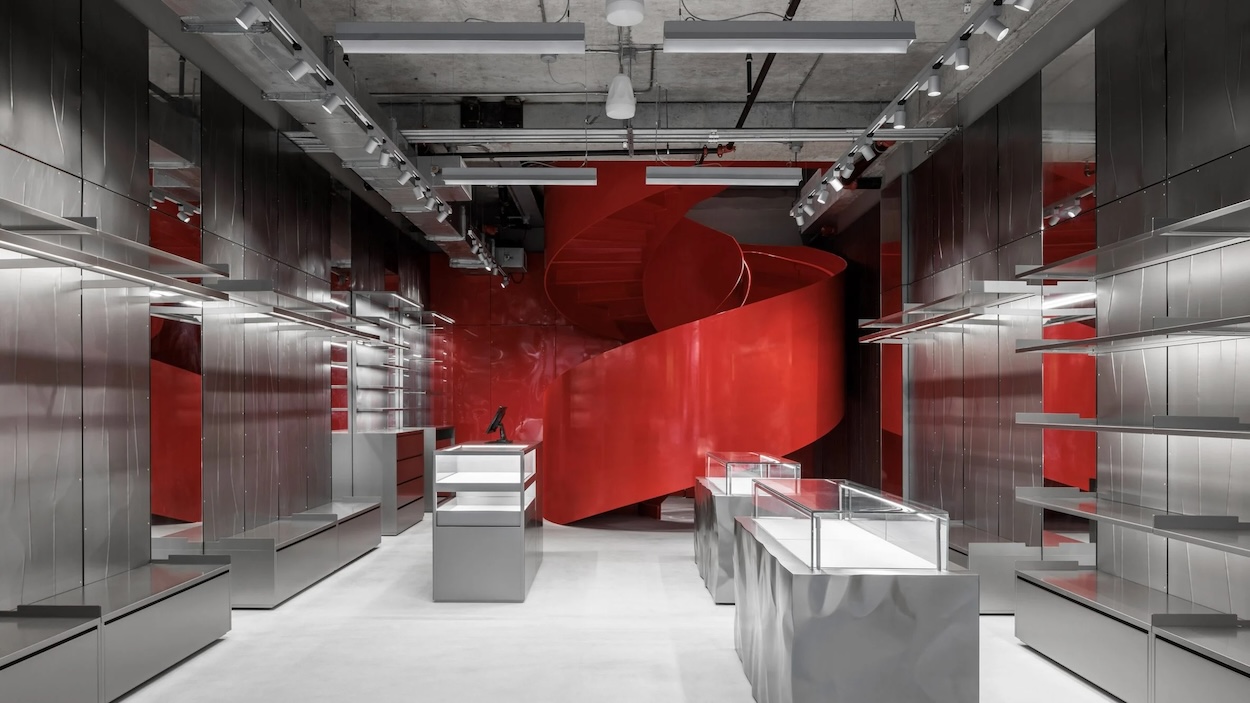The Design Dispatch offers expertly written and essential news from the design world crafted by our dedicated team. Think of it as your cheat sheet for the day in design delivered to your inbox before you’ve had your coffee. Subscribe now.
The Kunstsilo museum in Kristiansand, Norway, has opened within a renovated 1930s grain silo, marking a new cultural milestone for the Nordic region. This architectural transformation was led by MX_SI and Mestres Wåge Arquitectes, who preserved the silo’s industrial essence while integrating modern elements to enhance its function as an art museum. It now houses the Sørlandets Kunstmuseum and the Tangen Collection, featuring Norwegian modernist art from 1930 to 1970, aiming to blend historical reverence with dynamic cultural offerings.
As vehicles become more connected, researchers are considering revolutionary changes to traffic light systems, potentially eliminating traditional signals in favor of autonomous vehicle control. University of Michigan and North Carolina State University teams are exploring different approaches: Michigan focuses on using vehicle data to adjust light timings in real traffic, while NC State is proposing an additional “white light” phase for autonomous vehicle predominance. These advancements suggest a near-future where traffic management could be largely automated, relying on vehicle-to-infrastructure communication to enhance flow and safety.
Diesel has launched a new retail design concept in its Miami Design District store under the creative direction of Glenn Martens, showcasing an industrial-style aesthetic with a red lacquered spiral staircase and raw metal surfaces. The store features a striking glass facade framed in bold Diesel red and uses monochromatic backdrops with vibrant red accents to highlight items like bags, shoes, and denim. Designed to present the label’s full collection across two floors, the 1,900-square-foot space integrates minimalist design and structural elements to enhance product displays and the overall shopping experience.
This week, one of the world’s biggest carbon capture facilities, operated by Swiss company Climeworks, began removing carbon dioxide from the atmosphere by using geothermal energy. The plant, which is significantly larger than its predecessor and aims to capture 36,000 tons of CO2 annually, is facing criticism for high operational costs and debates over its effectiveness in combating climate change. While the technology promises environmental benefits by storing carbon underground, critics argue it may distract from addressing the root causes of climate change and could be exploited by oil companies to justify continued fossil fuel production.
NASA is planning to develop a lunar railway system called “Flexible Levitation on a Track” (FLOAT), designed to support operations at a sustainable lunar base in the 2030s. The FLOAT system will utilize unpowered magnetic robots that levitate over a film track, enabling the autonomous and efficient transport of payloads across the lunar surface. This innovative transport system will facilitate the movement of lunar soil and other materials between landing zones, outposts, and mining sites, adapting to the harsh and dusty lunar environment with minimal initial setup.
Here’s how an A-list animal trainer prepared a Great Dane for his film debut.
ASMR videos, once part of a small corner of the internet, are everywhere now.
Author Kyle Chayka weighs in on algorithmic anxiety and why content isn’t art.
Chuck E. Cheese’s creepy animatronic band will be phased out by year’s end.


